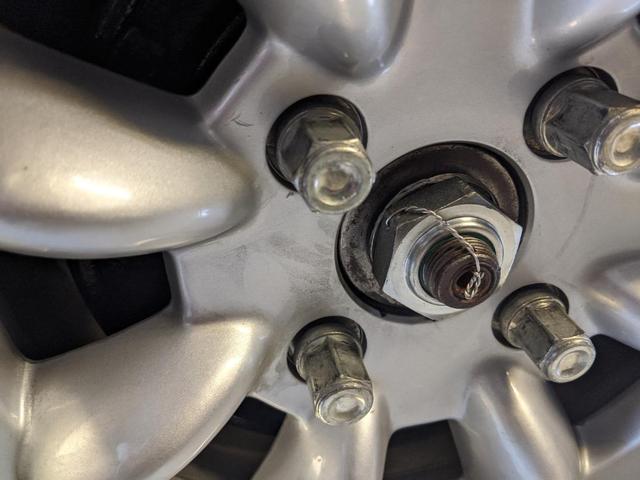There's a notch in the shafts which apparently allows the nut to be deformed into...but the nuts supplied didn't want to do that
 (and
they're not lock nuts either). I've left it and will check the torque again after xx miles
(and
they're not lock nuts either). I've left it and will check the torque again after xx miles 
Afternoon all,
I just received a pair of new, aftermarket Sierra rear shafts from one of the eBay driveshaft specialists (UK company) and I'm impressed with the
quality/service/price etc, however both the nearside and offside shafts have RIGHT hand hub nut threads.
The OE shafts I just removed had a left hand thread on the nearside (as you would expect).
Just wondered if anyone else had come across this, before I go to the bother of trying to return one shaft or enter into a debate?
Is this normal for aftermarket shafts? Is it posible they only manufacture 1 type of CV to keep costs down?
cheers
Tom
Mine had left hand thread on n/s. And right hand on o/s
Same here: left hand thread on n/s,and right hand thread on the o/s of my Sierra drive shafts. So it looks like as you say, hey only use one type of
CV joint to keep costs down.
Not a problem really if the nut is well secured. For example, on the racing cars I'm working with as a job (Mitjet), we have the same CV joint on
the LH and RH driveshafts (right hand thread). But the nut is secured by a nut cage + a pin going through the threaded end of the CV joint. So it
can't get off.
I would not trust a nylock nut alone (not secured by a pin) if there is a right hand thread on the nearside drive shaft.
[Edited on 22/5/24 by voucht]
Why don't you ring the suppliers and ask if they should both be rh thread? It could be you have 2 o/s drive shafts or maybe even a mistake o their part.
I had to replace a nearside one just before a trip a few years ago and I could only get a rh threaded one. It's been on ever since without issue
(15000miles?). I have had the other (correct one) come loose.
Virtually every other car on the road has a rh threaded joints on both sides and the Sierra one has the highest torque setting of any I've ever
come across. I wouldn't worry about it. Mark the nut so you can see if it moves.
I did a quick search earlier and found one reference that suggested that early Sierras may have had two right-hand threads.
My aftermarket driveshafts (from J&R) are both RH.
There's a notch in the shafts which apparently allows the nut to be deformed into...but the nuts supplied didn't want to do that  (and
they're not lock nuts either). I've left it and will check the torque again after xx miles
(and
they're not lock nuts either). I've left it and will check the torque again after xx miles
quote:
Originally posted by adithorp
...Mark the nut so you can see if it moves.
From experience (built a Ford Sierra based MK Indy) the Ford Sierra N/S and O/S driveshafts are:
1. Slightly different lengths
2. The outer threaded end has a keyway in which you should form a notch from the the hub nut - to prevent them coming undone
3. The torque is high
4. One side is LH thread, the other is RH thread
When I built my Indy I rebuilt the donor driveshafts and fitted new hub nuts.
Both the H/D shafts on the race car terminate in RH threads. Both were originally intended for a nut with a deformable external collar, punched into a
machined flat. This is discarded and a large castle nut utilised. The end of the shaft is drilled through from the flat to take a roll pin (put the
patient in a drill press vice and be careful).
Torqued to 180ft/lb in my case, limited by the bearing restrictions (they're old Fiat spec.)
Both of mine are right hand threads although they were left and right until I exchanged them when I got my kit.
After a couple of years driving I found one of my wheel bearing was worn as the nut had become undone slightly and allowed play in the bearing. After
I changed the bearing I drilled the end of the shaft and wirelocked it to stop any movement. The nuts are only Nyloc and so I wouldn't rely on it
and this is a cheap easy fix. Just use a cobalt drill to put a 1.5mm hole in the nut and shaft. Drill slowly with cobalt drill bits.


Description